PotlatchDeltic Corporation is an American diversified forest products company based in Spokane, Washington.
Pequaming is an unincorporated community in L'Anse Township of Baraga County in the U.S. state of Michigan. It is located on a narrow point of land that juts into Keweenaw Bay. Although still partially inhabited, Pequaming is one of the largest ghost towns in the Upper Peninsula of Michigan.
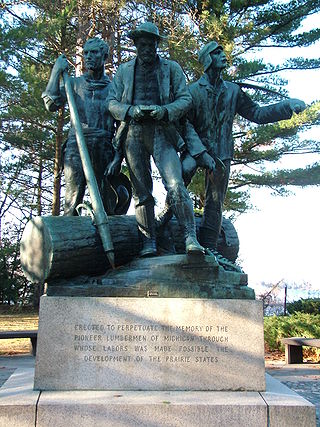
Lumberman's Monument is a monument dedicated to the workers of the early logging industry in Michigan. Standing at 14 feet, the bronze statue features a log surrounded by three figures: a timber cruiser holding a compass, a sawyer with his saw slung over his shoulder, and a river rat resting his peavey on the ground. The granite base of the statue is engraved with a memorial that reads "Erected to perpetuate the memory of the pioneer lumbermen of Michigan through whose labors was made possible the development of the prairie states." It is also inscribed with the names of the logging families who dedicated their time and efforts to the industry in the area. It was built in 1931, dedicated in 1932 and is managed by the USDA Forest Service. It is located in the northeastern part of the Lower Peninsula of Michigan along the Au Sable River within Huron-Manistee National Forests. Access to the park is on River Road, which intersects M-65 west of Oscoda, Michigan. Monument Road, from East Tawas, also leads directly to the monument, which is in Oscoda Township in Iosco County. The monument is part of the River Road Scenic Byway, a 22-mile (35 km) drive between Oscoda and South Branch that runs parallel with the beautiful Au Sable River. It is a designated National Scenic Byway.

Laurel Hill State Park is a 3,935-acre (1,592 ha) Pennsylvania state park in Jefferson and Middlecreek Townships, Somerset County, Pennsylvania in the United States. Laurel Hill Lake is a 63-acre (25 ha) man-made lake with a dam that was constructed during the Great Depression by the young men of CCC camps SP-8-PA and SP-15-PA. Laurel Hill State Park is 8 miles (13 km) from Interstate 76 just off Pennsylvania Route 31 near Bakersville and on Pennsylvania Route 653 near Trent.

Camp Tosebo, on the south shore of Portage Lake in Onekama Township, Michigan, was established in 1912 by Noble Hill, the headmaster of the Todd Seminary for Boys in Woodstock, Illinois, as one of the first summer camps in the United States. The name of the camp is an acronym derived from the school's name, TOdd SEminary for BOys, and meant to sound like a Native American Indian word. The camp was listed on the National Register of Historic Places in 2000.
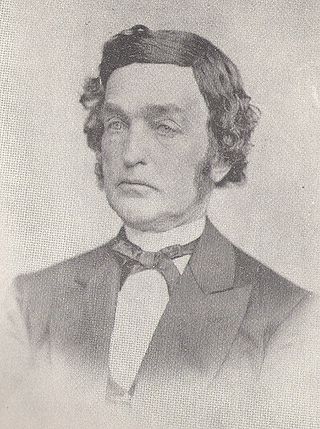
Charles Mears was a Michigan lumber businessman, capitalist, merchant, transportation executive, engineer, and farmer. He owned thousands of acres of timber in Michigan, and had 15 sawmills to produce lumber. Mears built cargo boats to transport his lumber to Chicago, and developed several harbors in western Michigan.

The Commandant's Quarters at the Dearborn Arsenal is a United States military structure located at 21950 Michigan Avenue in Dearborn, Michigan. Built in 1834, it is the oldest building in Dearborn still located on its original site. It is considered to be one of the seven most significant buildings in Michigan. It was designated as a Michigan State Historic Site in 1956 and listed on the National Register of Historic Places in 1970.

The Clemuel Ricketts Mansion is a Georgian-style house made of sandstone, built in 1852 or 1855 on the shore of Ganoga Lake in Colley Township, Sullivan County, Pennsylvania in the United States. It was home to several generations of the Ricketts family, including R. Bruce Ricketts and William Reynolds Ricketts. Originally built as a hunting lodge, it was also a tavern and post office, and served as part of a hotel for much of the 19th century.
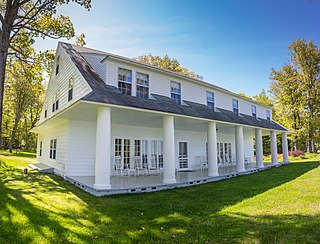
The Hebard–Ford Summer House is a private house located north of L'Anse, Michigan in Pequaming, Michigan. It is also known as the Ford Bungalow. The house was designated a Michigan State Historic Site in 1979 and listed on the National Register of Historic Places in 1982.
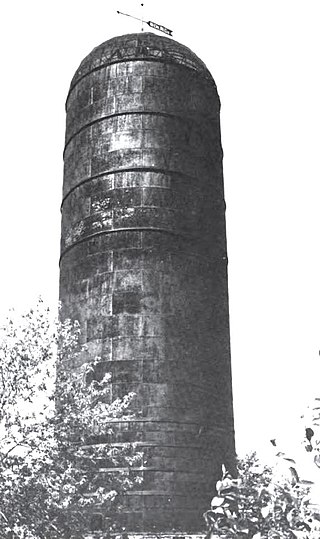
The Bay de Noquet Lumber Company Waste Burner was an industrial waste burner located at the south end of River Street in Nahma Township, Michigan. It was built to burn waste wood and bark from the nearby sawmill; until 2019 it was the only known example of this type of waste burner surviving in Michigan, and it was listed on the National Register of Historic Places in 2011. The burner collapsed in 2019, and was removed from the National Register in 2020.

Rose Terrace was a private home located at 12 Lake Shore Drive in Grosse Pointe Farms, Michigan. Built in 1934 by Anna Dodge, widow of automobile pioneer Horace E. Dodge, it was designated a Michigan State Historic Site in 1971 and listed on the National Register of Historic Places in 1971. Despite this, the house was demolished in 1976.

Gordon Hall, also known as the Judge Samuel W. Dexter House, is a private house located at 8341 Island Lake Road in Dexter, Michigan. It was designated a Michigan State Historic Site in 1958 and listed on the National Register of Historic Places in 1972. The house is unique in Michigan for its balance, large scale, and massive hexastyle portico. The structure is also significant as the dwelling of Judge Samuel W. Dexter, a pioneering Michigan resident and land baron who had a substantial impact on early development of Washtenaw County and other sections of the state. The house was later owned by Dexter's granddaughter Katharine Dexter McCormick, a pioneering research scientist, suffragist, and philanthropist. In its early days, Gordon Hall hosted at least two, and possibly three United States presidents, and it was almost certainly a stop along the Underground Railroad.

The Cobbs and Mitchell Building is an office building located at 100 East Chapin Street in Cadillac, Michigan. It was designated a Michigan State Historic Site in 1980. and listed on the National Register of Historic Places in 2010.
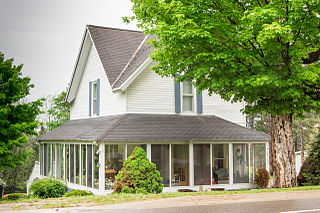
The Red Fox Inn, also known as the Horton Bay House, is a building, originally, a boardinghouse, located at 05156 Boyne City Road in Horton Bay, Michigan. It was listed in the National Register of Historic Places in 1995. The inn is mentioned in Ernest Hemingway's short story, "Up in Michigan," and tradition has it that the inn's proprietor during the 1910s and 20s, Vollie Fox, taught Hemingway how to fish.
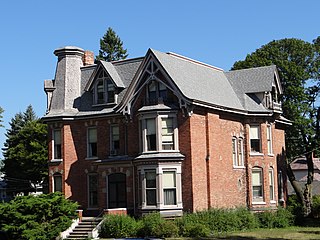
The Simeon Babcock House is a private house located at 420 Third Street in Manistee, Michigan.
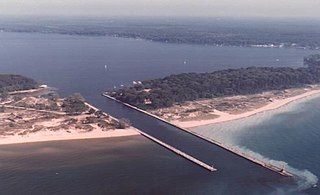
The Navigation Structures at White Lake Harbor area set of piers protecting the channel connecting Lake Michigan and White Lake, located at the end of Lau Road near Whitehall, Michigan. It was listed on the National Register of Historic Places in 2000.
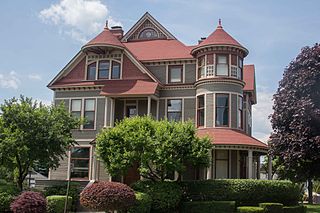
The Horatio N. Hovey House is a private house located at 318 Houston Avenue in Muskegon, Michigan. It was listed on the National Register of Historic Places in 1983.

The Huron City Historic District is a historic district encompassing the village of Huron City, Michigan, with structures located primarily along Pioneer Drive. The district was listed on the National Register of Historic Places in 1995.

The Thomas Forsyth House is the historic home of an early settler of Toquerville, Utah. One of the Mormon pioneers, Thomas Forsyth built the house circa 1868 and lived there until his death in 1898. He operated mills, dried fruit and stocked the cellar with wine he made himself, while his wife Mary Browett Holmes ran a glove shop. The simple 1½-story fieldstone construction, a hall-and-parlor house extended with a lean-to, is representative of the pioneer period.
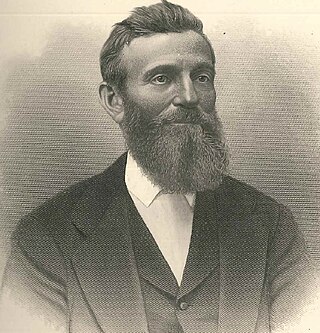
Delos L. Filer was a businessman involved in developing Manistee County and the towns of Manistee, Filer City and Ludington in the state of Michigan. He owned sawmills and related businesses.





















